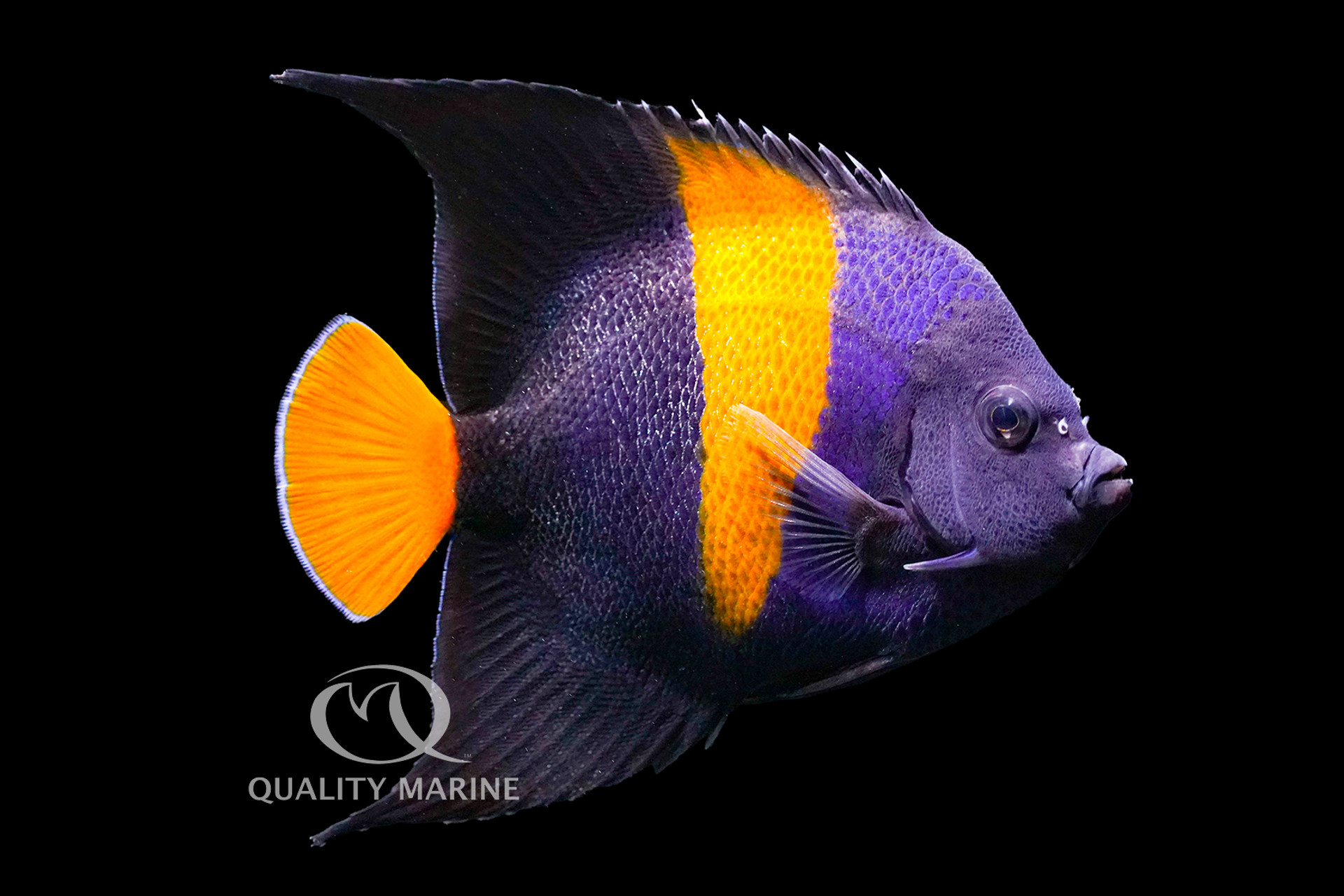Highly Underrated Fish – What's an Asfur (Pomacanthus asfur)

Asfur Angels are very common within their home range which is small and remote in relation to North America, making this angel much less common than it should be here. The combination of distance and frequent political instability throughout much of this area often relates to a aquarium inhabitant with limited availability.
In the Wild
Pomacanthus genus fish are grazers on the reef, consuming sponges, tunicates and a wide variety of small invertebrates along with the small invertebrates living on and in them. P. asfur is no different in this regard. Likely because of this foraging style, they are found at the same shallow depths where this food is common, frequently found on protected reefs with lots of coral growth where they are generally single or in pairs. Even in the wild, they are very territorial with conspecifics (unless paired). Their range distribution spreads throughout the western Indian Ocean, including the Red Sea and the Gulf of Aden; their southern range extends into subtropical waters.
The biggest Asfur Angel on record is 40cm long (for those of you not metrically inclined, that's almost 16 inches). A size they reach very slowly over a lifespan that can last 10 years or more. Unlike most fish of this size (even reef fish) they are not commonly consumed as a food fish, perhaps because their natural diet likely includes a large number of dinoflagellates which, if they are consistently consuming the wrong species of dino, would make them a higher than average cigutera risk. The IUCN lists the Asfur as a “species of least concern” which means there is enough data to support the wild harvest of this fish at current rates without damage to the population at large. They are not sexually dimorphic, meaning there isn't a good way to visually identify their sex.
In The Aquarium
Pomacanthus asfur has a few common names: Asfur Angel, Arabian Angel, Half Moon Angel and my personal favorite, Crescent Moon Angel. While many Pomacanthids have a reputation of boisterousness, the Asfur is not one of them. They tend to be very shy and reclusive. Notable exceptions are other angelfish, which the Asfurs will be territorial with, and very small docile fish, which the Asfur may pick on. Regardless, they should be housed in a large aquarium that has many hiding places in the rockwork, which will help them acclimate.
While their wild diet consists predominantly of sponges and tunicates, Asfur Angels are usually easily conditioned to take prepared foods, which eliminates the primary challenge of keeping other large Angelfish. Diet variety is very important for all Angelfish and the Asfur is no exception; be sure to feed them a mix of foods that include sponge / algal matter and a good source of protein like frozen mysis or a quality pellet.
There was a time when all Angelfish in available to the home hobbyist were wild caught, and the Asfur is a good candidate for this as their harvest rates are very sustainable. However, in recent years, captive bred fish have become available, and we offer them for our partners whenever they can be sourced. Captive fish have all the same great durability and ease-of-keeping characteristics that wild caught fish have. Some batches have had higher than normal number of aberrant patterns.
Both fish make excellent candidates for the home aquarist looking for beautiful, hardy fish with stark coloration. While this fish has a quite large maximum size in the wild, they rarely get larger than 12 inches or so in captivity. This fish will need a large aquarium to keep them happy at full grow out. For the Aquarist looking for a Red Sea biotope, the Asfur Angel is a perfect showpiece fish. Ask your Local Fish Store about getting you one of these durable, gorgeous fish from Quality Marine.
Biblio:
Allen, G.R., Butterfly and angelfishes of the world. Vol. 2. 3rd edit. in English. (Mergus Publishers, 1985.) Melle, Germany.
Scott W. Michael, Angelfishes & Butterflyfishes, 1st ed. (T.F.H. Publications 2004)
Rudie H Kuiter & Helmut Debelius, World Atlas of Marine Fishes, 1st ed. (IKAN-Unterwasserarchiv 2006)
Fishbase, Reyes, Rodolfo B & Bailly, Nicolas. https://www.fishbase.se/summary/11194 Accessed 18 October 2020
IUCN, (2020) https://www.iucnredlist.org/species/165839/6145733 (Accessed 18 October 2020)